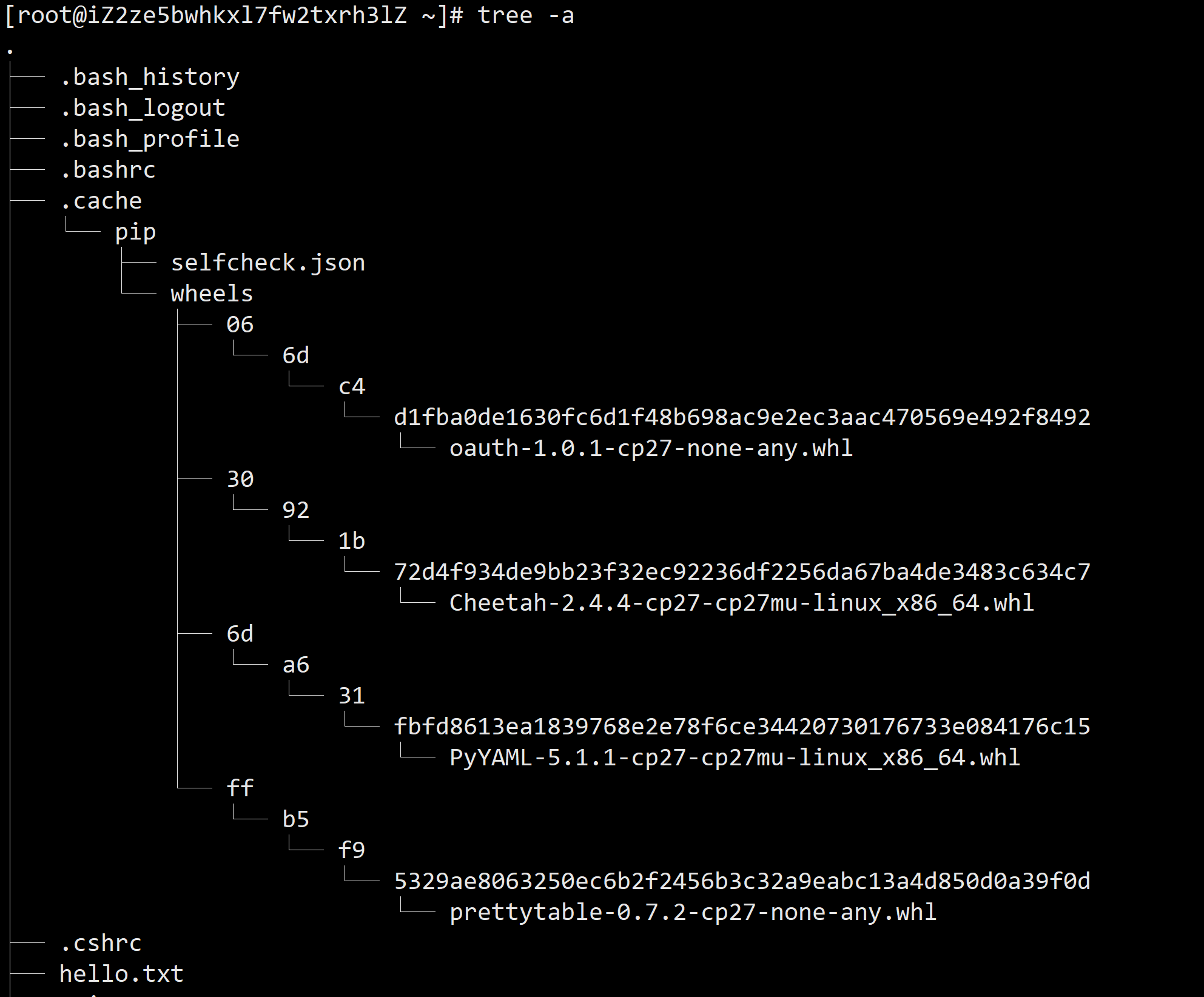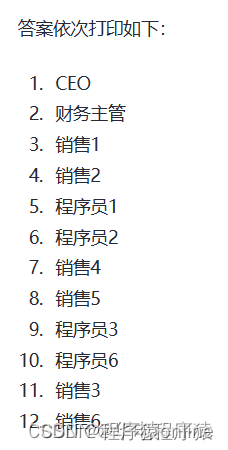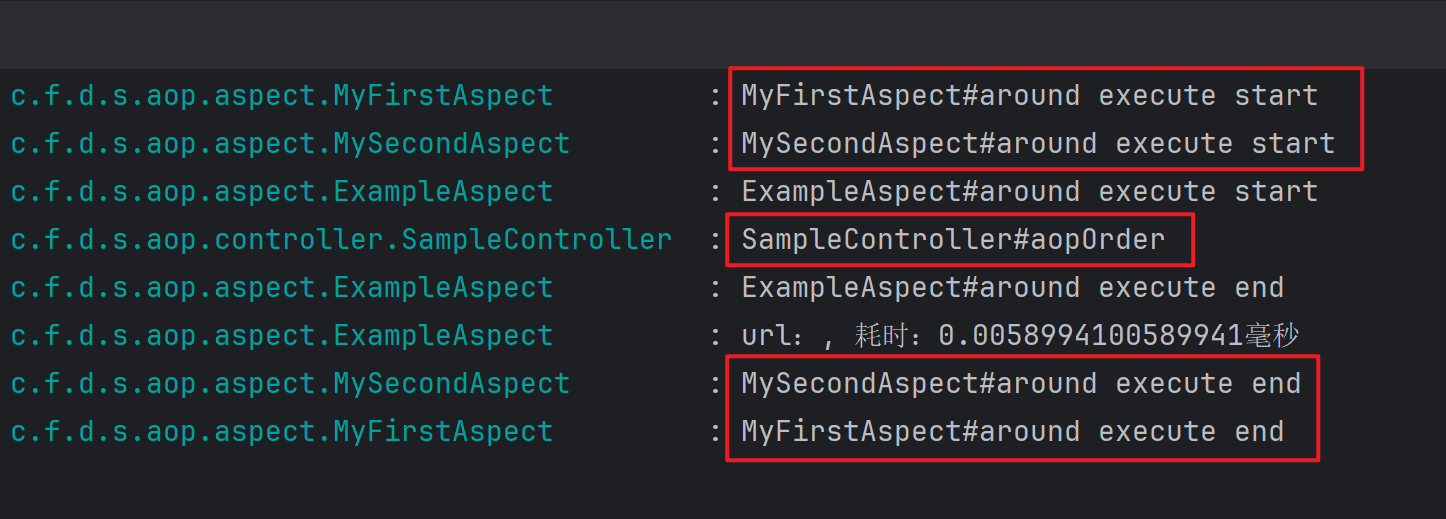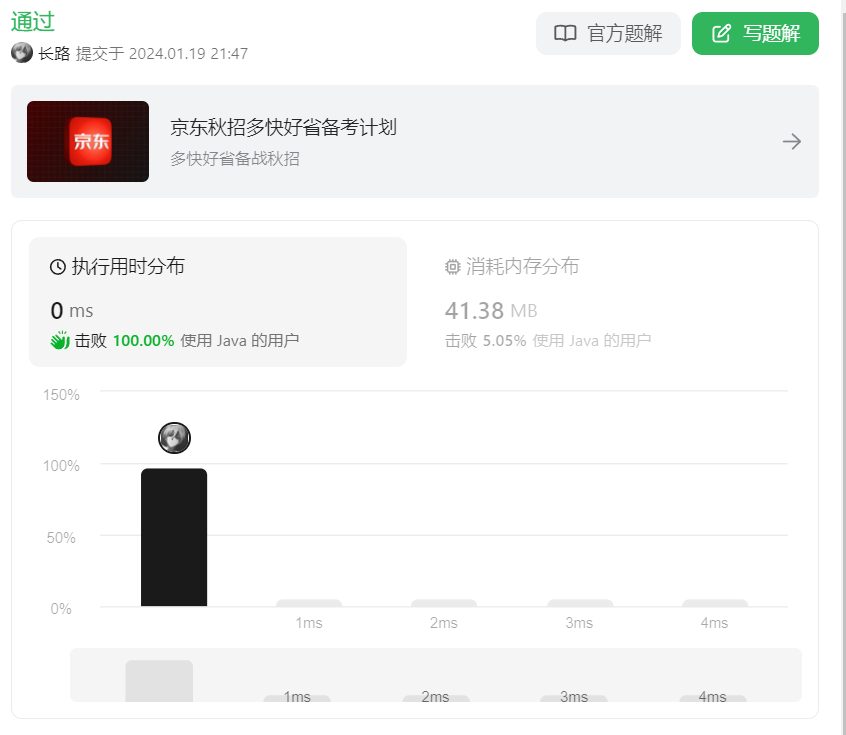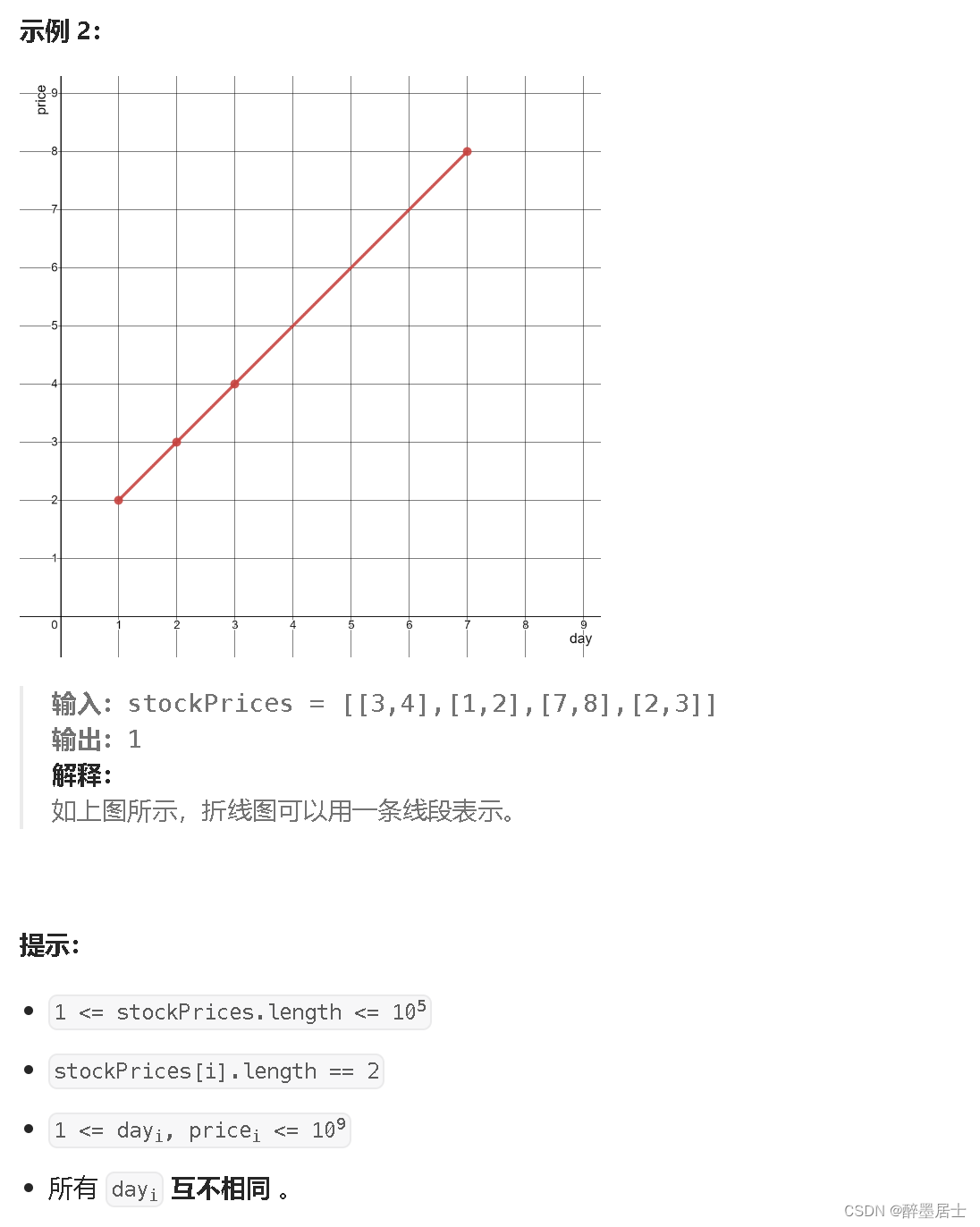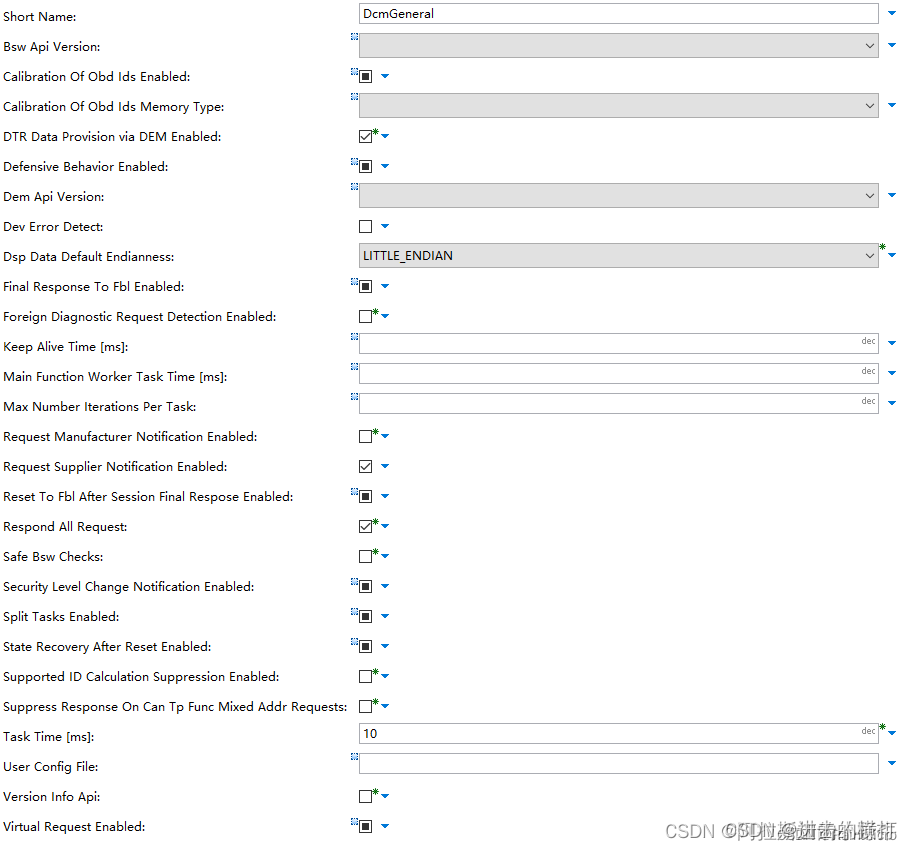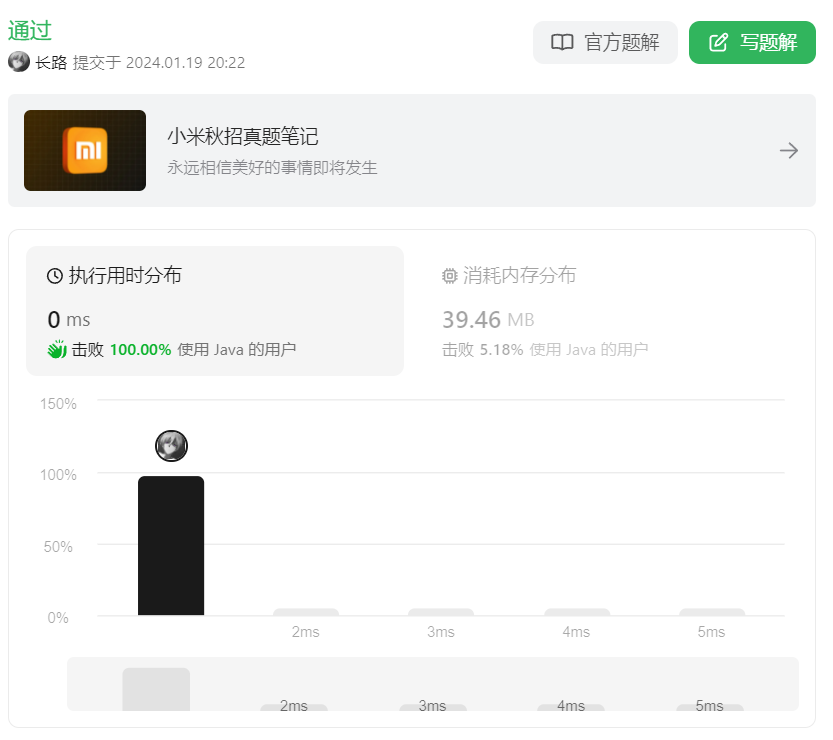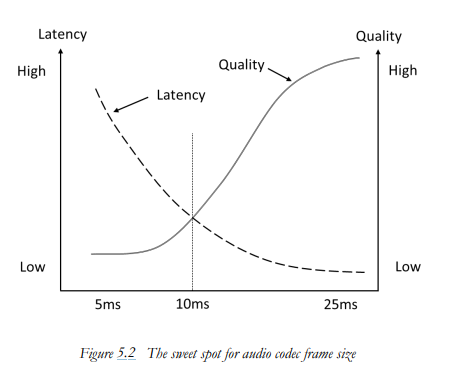目录
链表和LinkedList
1.链表的实现
2.LinkedList的使用
3.ArrayList和LinkedList的区别
4.链表OJ题训练
链表和LinkedList
当 在 ArrayList 任意位置插入或者删除元素时,就需要将后序元素整体往前或者往后搬移,时间复杂度为 O(n) ,效率比较低,因此 ArrayList 不适合做任意位置插入和删除比较多的场景。链表是一种 物理存储结构上非连续 存储结构,数据元素的 逻辑顺序 是通过链表中的 引用链接 次序实现的 。
1.链表的实现
链表结构有三种情况,可以相互组合共八种链表结构。
- 单向或双向
- 带头或不带头(头结点一般装链表长度信息)
- 循环或非循环
下面是无头单向非循环链表的实现:
public class MyLinkedList {class LinkedNode{int val;LinkedNode next;public LinkedNode(int val){this.val=val;}}LinkedNode head;// 1、无头单向非循环链表实现//头插法public void addFirst(int data){if(head==null){head.val=data;}else{LinkedNode node=new LinkedNode(data);node.next=head;head=node;}}//尾插法public void addLast(int data){LinkedNode cur=head;if(head==null){head.val=data;}else{while (cur.next!=null){cur=cur.next;}LinkedNode node=new LinkedNode(data);cur.next=node;}}//任意位置插入,第一个数据节点为0号下标public void addIndex(int index,int data){LinkedNode cur=head;if(head==null){head.val=data;}else{if(index<1||index>size()){System.out.println("插入位置不合法");}else{index--;while (index>0){cur=cur.next;index--;}LinkedNode node=new LinkedNode(data);node.next=cur;if(index==1){head=node;}}}}//查找是否包含关键字key是否在单链表当中public boolean contains(int key){LinkedNode cur=head;if(head==null){return false;}else{while (cur.next!=null){if(cur.val==key){return true;}cur=cur.next;}if(cur.val==key){return true;}return false;}}//删除第一次出现关键字为key的节点public void remove(int key){if(head!=null){if(head.val==key){head=head.next;return;}LinkedNode cur=head.next;LinkedNode prev=head;while (cur!=null&&cur.next!=null){if(cur.val==key){prev.next=cur.next;return;}cur=cur.next;prev=prev.next;}System.out.println("沒有要刪除的元素");}}//删除所有值为key的节点public void removeAllKey(int key){if(head!=null){if(head.val==key){head=head.next;}LinkedNode cur=head.next;LinkedNode prev=head;while (cur!=null&&cur.next!=null){if(cur.val==key){prev.next=cur.next;}cur=cur.next;prev=prev.next;}System.out.println("沒有要刪除的元素");}}//得到单链表的长度public int size(){LinkedNode cur=head;int num=0;while (cur!=null){num++;cur=cur.next;}return num;}public void clear() {LinkedNode cur;while (head!=null){cur=head;head=head.next;cur.val=0;cur.next=null;}}//遍历public void display() {LinkedNode cur=head;while (cur!=null){System.out.print(cur.val+"\t");cur=cur.next;}}
}2.LinkedList的使用
Java中的linked是一个双向链表,且实现了 Deque,Cloneable,Serializable 三个接口。这说明该数据结构支持队列,克隆和序列化操作的。与 ArrayList 一样,允许 null 元素的存在,且是不支持多线程的。一些常见方法如下:
| 方法 | 解释 |
| boolean add (E e) | 尾插 e |
| void add (int index, E element) | 将 e 插入到 index 位置 |
| boolean addAll (Collection<? extends E> c) | 尾插 c 中的元素 |
| E remove (int index) | 删除 index 位置元素 |
| boolean remove (Object o) | 删除遇到的第一个 o |
| E get (int index) | 获取下标 index 位置元素 |
| E set (int index, E element) | 将下标 index 位置元素设置为 e |
| void clear () | 清空 |
| boolean contains (Object o) | 判断 o 是否在线性表中 |
| int indexOf (Object o) | 返回第一个 o 所在下标 |
| int lastIndexOf (Object o) | 返回最后一个o的下标 |
| List<E> subList (int fromIndex, int toIndex) | 截取部分list |
3.ArrayList和LinkedList的区别
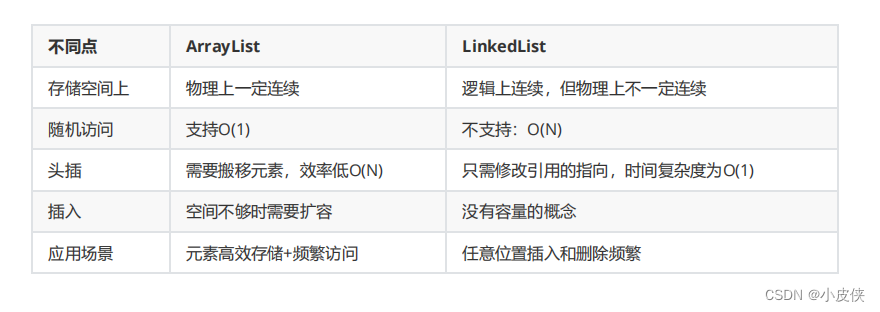
4.链表OJ题训练
下面给出牛客或者力扣的经典题型,重复练习对加深知识点很有帮助
- 反转一个单链表。
- 链表的回文结构。
- 输入两个链表,找出它们的第一个公共结点。
- 给定一个链表,判断链表中是否有环。
- 给定一个链表,返回链表开始入环的第一个节点。 如果链表无环,则返回 NULL

